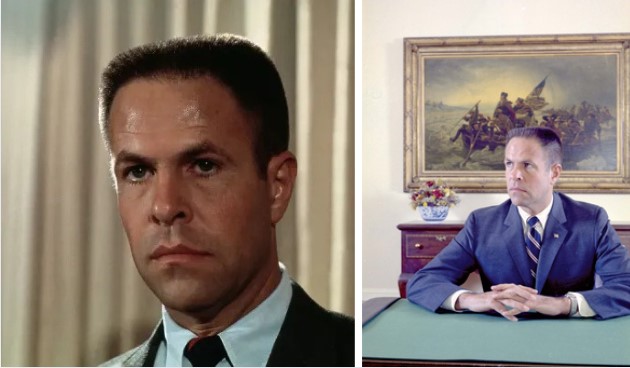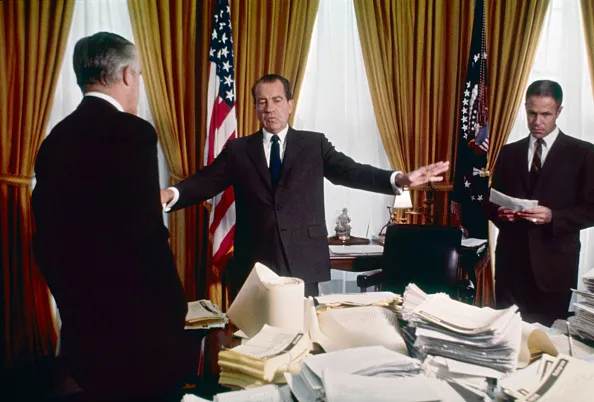Celebrity
Discover the Life and Legacy of Bob Haldeman

Bob Haldeman was a powerful figure in American political and business history. Known for his sharp organizational skills, leadership in the Nixon administration, and later success as a businessman, Haldeman’s career reflected both triumph and controversy. His role as the White House Chief of Staff during a turbulent era helped shape the inner workings of the modern presidency.
Quick Bio
| Quick Bio of Bob Haldeman | Details |
|---|---|
| Full Name | Harry Robbins “Bob” Haldeman |
| Profession | Businessman and Former White House Chief of Staff |
| Date of Birth | October 27, 1926 |
| Place of Birth | Los Angeles, California, USA |
| Date of Death | November 12, 1993 |
| Nationality | American |
| Education | University of California, Los Angeles (UCLA) |
| Years Active | 1950s–1990s |
| Famous For | Role in the Nixon White House and Watergate era |
| Notable Positions | Chief of Staff to President Richard Nixon |
Early Life and Background

Bob Haldeman was born in Los Angeles, California, in 1926 into a family deeply involved in business and civic affairs. His father was a successful businessman, and from an early age, Bob displayed the same traits of discipline, ambition, and precision that would define his later career.
He attended the University of California, Los Angeles (UCLA), where he majored in business and became active in campus leadership. After graduating, he served in the U.S. Naval Reserve during World War II, an experience that honed his sense of order and efficiency — qualities that later made him one of the most structured figures in American politics.
Entry into Business and Advertising

Before entering politics, Bob Haldeman built a strong career in the business world. He joined the well-known advertising firm J. Walter Thompson, where he worked for nearly two decades. Rising to the position of senior executive, Haldeman earned a reputation for his strict management style and keen attention to detail.
His success in advertising gave him experience in branding, communications, and executive organization — skills that would later prove invaluable in the political arena. Colleagues often described him as methodical and disciplined, someone who valued precision and loyalty above all else.
Role in the Nixon Presidential Campaigns
Haldeman’s transition from business to politics began through his close association with Richard Nixon, a fellow Californian. He first worked on Nixon’s 1960 presidential campaign and then played a key role in the 1968 campaign, which successfully brought Nixon to the White House.
As Nixon’s campaign manager and trusted advisor, Bob Haldeman became known for his ability to manage complex operations behind the scenes. His meticulous planning and focus on media strategy were essential in projecting Nixon’s image as a strong and capable leader.
After the election, Nixon rewarded Haldeman with one of the most powerful positions in Washington — White House Chief of Staff.
White House Chief of Staff: The Gatekeeper

As Chief of Staff, Bob Haldeman was often described as the “gatekeeper to the President.” His job was to manage all access to Nixon, oversee staff operations, and maintain strict control over the White House schedule.
Under Haldeman’s leadership, the Nixon White House became highly organized and disciplined. He streamlined communication, enforced order, and ensured that every piece of information reaching the President was carefully reviewed.
While his efficiency earned respect, it also led critics to view him as overly controlling. Nevertheless, his administrative structure became a model for future White House operations, influencing how modern presidential staffs function to this day.
Involvement in the Watergate Scandal
Despite his early achievements, Bob Haldeman is most remembered for his involvement in the Watergate scandal, one of the most significant political controversies in U.S. history.
As details of the scandal emerged in the early 1970s, it became clear that several high-ranking officials in the Nixon administration were implicated in efforts to cover up the break-in at the Democratic National Committee headquarters. Haldeman, as Chief of Staff, was drawn into the investigation due to his close proximity to the President and his role in managing internal communications.
In 1973, he resigned amid mounting pressure, and in 1975, he was convicted of conspiracy and obstruction of justice. He served 18 months in prison. This period marked a dramatic fall from grace for one of the most powerful men in Washington.
Life After Politics and Career in Business
After his release, Bob Haldeman chose not to return to politics. Instead, he focused on rebuilding his life through business ventures and writing. He spent his later years in Florida, managing real estate investments and agricultural projects.
Haldeman also published a memoir, The Ends of Power (1978), which provided his personal account of the Nixon years. The book offered rare insight into the inner workings of the White House and reflected his belief that history should view his actions within the broader context of presidential loyalty and administrative discipline.
Leadership Style and Personality
Throughout his career, Bob Haldeman was known for his precision, loyalty, and uncompromising professionalism. Whether in business or politics, he valued efficiency and order above charisma.
Colleagues described him as reserved, focused, and deeply committed to his responsibilities. His leadership style was structured, emphasizing planning and accountability — traits that often drew both admiration and criticism.
Haldeman was not one for public displays of emotion; he preferred to operate behind the scenes, ensuring that systems worked smoothly. His attention to hierarchy and procedure earned him comparisons to a corporate executive more than a traditional political figure.
Impact on the White House and Legacy of Reform
Even though his tenure ended in controversy, Bob Haldeman left a lasting impact on how the White House operates. Before his time, the Chief of Staff position lacked formal structure. Haldeman transformed it into one of the most crucial roles in government, centralizing power and creating clear chains of command.
His system of disciplined staff management became a model followed by later administrations, including those of Ronald Reagan, George H. W. Bush, and Bill Clinton. In this way, his influence extended far beyond his years in office.
Public Perception and Historical Reassessment
In the years following Watergate, public opinion toward Bob Haldeman was largely shaped by his connection to the scandal. However, historians have since re-evaluated his contributions, recognizing his skill in organization and his role in modernizing presidential operations.
Many biographers argue that while Haldeman made serious mistakes in judgment, he also brought professionalism and structure to a chaotic political environment. His story serves as both a cautionary tale and a study in leadership under pressure.
Personal Life and Family
Outside of politics, Bob Haldeman was a devoted family man. He married in 1949, and together they had four children. Despite the challenges of his public career, Haldeman remained committed to his family, often retreating to spend time with them after his release from prison.
He was also an avid outdoorsman who enjoyed sailing and conservation work, interests that reflected his California upbringing and appreciation for discipline and balance.
Death and Posthumous Reflection
Bob Haldeman passed away in 1993 at the age of 67 after battling cancer. Following his death, political scholars and historians continued to debate his legacy — as both a symbol of executive power and a reminder of the dangers of excessive control.
His contributions to White House management remain significant, and his story continues to be studied in political science and history courses across the United States.
Conclusion
Bob Haldeman remains one of the most complex figures in 20th-century American politics. His rise from successful businessman to one of the most influential aides in the Nixon administration highlights his unmatched organizational skill and leadership.
Although his career was tarnished by Watergate, his influence on the structure of the modern presidency endures. In both business and government, Haldeman demonstrated how discipline and efficiency can shape institutions — and how power, when unchecked, can lead to downfall.
FAQs
Who was Bob Haldeman?
Bob Haldeman was an American businessman and former White House Chief of Staff under President Richard Nixon.
What is Bob Haldeman known for?
He is best known for his powerful role in the Nixon administration and his involvement in the Watergate scandal.
What did Bob Haldeman do before politics?
He worked in advertising and business, rising to executive rank at J. Walter Thompson.
How did Bob Haldeman change the White House?
He created the modern structure of the Chief of Staff role, emphasizing order and control.
What happened to Bob Haldeman after Watergate?
He served 18 months in prison, then became a businessman and author in Florida.
More Info And Buzz Visit: Dodge Buzz
-

 Celebrity9 months ago
Celebrity9 months agoWho Is Steve Cena? All About John Cena’s Brother and His Life
-

 Uncategorized9 months ago
Uncategorized9 months agoWho is Janet Gayle? All About Gary Burghoff’s Ex-Wife
-

 Celebrity9 months ago
Celebrity9 months agoWho is Nadia Farmiga? All You Need to Know About Vera Farmiga’s Sister
-

 Celebrity9 months ago
Celebrity9 months agoWho Is Samuel Nowlin Reeves Jr.? The Untold Biography of Keanu Reeves’ Father




















